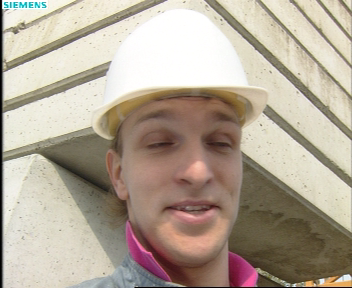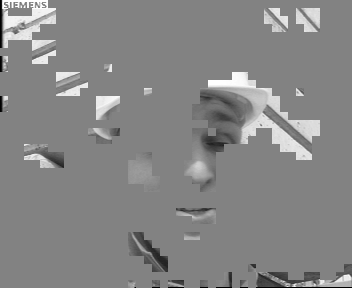Section: New Results
Analysis and modeling for compact representation and navigation
3D modelling, multi-view plus depth videos, Layered depth images (LDI), 2D and 3D meshes, epitomes, image-based rendering, inpainting, view synthesis
Salient object detection
Participants : Olivier Le Meur, Zhi Liu.
Salient object detection consists in extracting in an automatic manner the most interesting object in an image or video sequence. From an input image, an object, with well-defined boundaries, is detected based on its saliency. This subject knows an renewed interest these last years. A number of datasets serving as ground truth has been released and can be used to benchmark methods.
In 2013, a new method to detect salient objects has been proposed [32] , [18] . The principle relies upon low-level visual features and super-pixel segmentation. First, the original image is simplified by performing super-pixel segmentation and adaptive color quantization. On the basis of super-pixel representation, inter-super-pixel similarity measures are then calculated based on difference of histograms and spatial distance between each pair of super-pixels. For each super-pixel, its global contrast measure and spatial sparsity measure are evaluated, and refined with the integration of inter super-pixel similarity measures to finally generate the super-pixel-level saliency map. Experimental results on a dataset containing 1,000 test images with ground truths demonstrate that the proposed saliency model outperforms state-of-the-art saliency models. Figure 1 illustrates some results.
|
Image Memorability
Participant : Olivier Le Meur.
This work has been carried out in collaboration with Mattei Mancas (researcher of the University of Mons) during his visit of the team. The image memorability consists in the faculty of an image to be recalled after a period of time. Recently, the memorability of an image database was measured and some factors responsible for this memorability were highlighted. In [34] we proposed to improve an existing method by using attention-based visual features. To determine whether the visual attention plays a role in the memorability mechanism, eye tracking experiment has been performed by using a set of images of different memorability scores. Two important results have been observed. First the fixation duration is longer for the most memorable images (especially for the very first fixations) which shows a higher cognitive activity for memorable images. Second the observers congruency (agreement between observers) is significantly higher for the most memorable images. This shows that when there are areas with high attraction on all viewers, this induces higher memorability.
Following these first two observations, attention-based visual features were used to predict image memorability scores. A new set of features was then defined and used to train a model. Compared to an existing approach, we improve on the quality of the prediction of while reducing the number of parameters by . More specifically we replace the 512 features related to the GIST by 17 features which are directly related to visual attention.
Models for 3D video quality assessment
Participants : Darya Khaustova, Olivier Le Meur.
This work is carried out in collaboration with Orange labs. The goal is to design objective metrics for quality assessment of 3D video content, by establishing links between human visual perception (visual comfort) and video parameters such as quality and depth quantity, and between visual comfort and visual attention. The goal is also to study the differences in 2D visual attention in comparison with 3D visual attention.
Several subjective experiments have been carried out in order to study visual attention in different viewing conditions. The goal of the first experiment, involving 135 observers, was to study visual attention in three different conditions (2D, 3D comfortable and 3D uncomfortable), to eventually establish whether depth influences visual attention and whether there is a link between comfort and visual attention. The use of an eye-tracker allowed to record and to track observer’s gaze. By analyzing the results, we found out that visual strategy to observe 2D images and 3D images with uncrossed disparity is very similar; there was no significant influence of discomfort on visual attention.
The second question which has then been addressed is how visual attention is influenced by objects with crossed disparity. A second test has been designed to answer this question, involving 51 observers. Considering scenes with crossed disparity it was revealed that objects located in front of the display plane are the most salient, even if observers experience discomfort. In the third experiment, we extended the study using scenes with crossed and uncrossed disparities. We verified the hypothesis that texture and contrast are more influential in guiding our gaze than the amount of depth. The features influencing the saliency of the objects in stereoscopic conditions were also evaluated with low-level visual stimuli. It was discovered that texture is the most salient feature in comparison to depth. Crossed disparity significantly influences the process of selecting the objects, while uncrossed disparity is less important, the process of selection being in this latter case similar to 2D conditions.
Epitome-based video representation
Participants : Martin Alain, Christine Guillemot.
This work is carried out in collaboration with Technicolor (D. Thoreau, Ph. Guillotel) and aims at studying novel spatio-temporal representations for videos based on epitomes. An epitome is a condensed representation of an image (or a video) signal containing the essence of the textural properties of this image. Different forms of epitomes have been proposed in the literature, such as a patch-based probability model learned either from still image patches or from space-time texture cubes taken from the input video. These probability models together with appropriate inference algorithms, are useful for content analysis inpainting or super-resolution. Another family of approaches makes use of computer vision techniques, like the KLT tracking algorithm, in order to recover self similarities within and across images. In parallel, another type of approach consists in extracting epitome-like signatures from images using sparse coding and dictionary learning.
We have in the past (in the context of the PhD thesis of S. Cherigui) developed a method for constructing epitomes for representing still images. The algorithm tracks self-similarities within the image using a block matching (BM) algorithm. The epitome is constructed from disjoint pieces of texture (“epitome charts”) taken from the original image and a transform map which contains translational parameters (see Fig.2 . Those parameters keep track of the correspondences between each block of the input image and a block of the epitome. An Intra image compression scheme based on the epitome has been developed showing significant rate savings on some images, including the rate cost of the epitome texture and of the transform map. The entire image can be reconstructed from the epitome texture with the help of the transform map. The method is currently being extended to construct epitome representations of video segments rather than simple images. Such spatio-temporal epitome should pave the way for novel video coding architectures and open perspectives for other video processing problems which we have started to address such as denoising and super-resolution.





